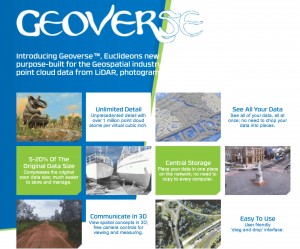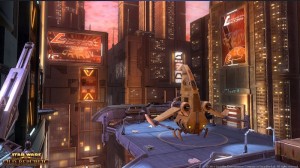 It’s not often we get deep into the tech behind things like games, but sometimes it’s worth making an exception.
It’s not often we get deep into the tech behind things like games, but sometimes it’s worth making an exception.
You may not have heard of Euclideon, who made a splash back on 2010 with their claims they’d changed the graphics industry. Even you haven’t heard of them, you’re likely to in coming years, as their claims seem to be bearing out in a big way.
Now I’m a bit biased on this, in that around a year ago I had a chance to sit down with Euclideon’s founder, Bruce Dell, to check a demo out. You can read about that here. It’s fair to say I was impressed, albeit with the disclaimer I have no coding knowledge whatsoever.
Since that meeting a year ago, Euclideon has been under a self-imposed media blackout to get things done. One of those things is Geoverse, a tool that allows compaction of large LiDAR data sets so that they can be viewed via the cloud rather than installed on each computer. It doesn’t exactly sound sexy but I can see how this might be a good way to build a profile in the sciences and military, rather than being pigeon-holed in the gaming industry. A year ago when I met with Bruce, his intentions were pretty clear that it wasn’t about games – and nor should it be if this technology bears out.
Anyway, enough tech talk for a minute, have a look at this video:
As someone who’s followed Euclideon closely over the past year, I can tell you these guys have copped flak and scepticism from every quarter. What I’ve seen in return is the growth of a technology that appears to have applications in a huge variety of ways.
The video above doesn’t show anything new compared to a year ago – I’m expecting the next iteration to be a few months off yet. However, the announcement of Geoverse as a product that leverages off the Unlimited Detail engine, shows a maturing company. That’s something needed to ensure this technology becomes what it claims – and that includes the gaming industry which would be seriously turned on its head if and when Unlimited Details reaches a release stage.
Over to you: what do you think of this technology? Can you see it appearing in a game near you in the not-too-distant future?



Recent Comments